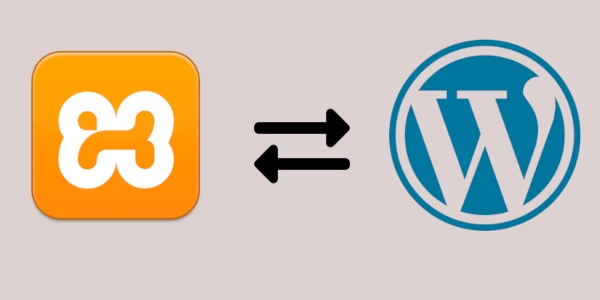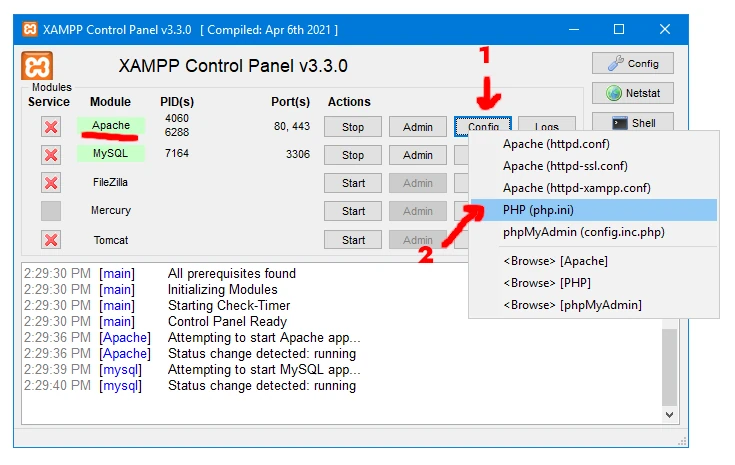XAMPP یک محیط سرور محلی است که شامل Apache-MySQL-PHP-Perl میشود. کندی که هنگام کار با زمپ و وردپرس تجربه میکنید، میتواند به عوامل مختلفی نسبت داده شود. برای افزایش سرعت XAMPP برای وردپرس، میتوانید بهینهسازیهای زیر را در نظر بگیرید.

چگونگی افزایش سرعت XAMPP برای وردپرس
منابع سرور: مطمئن شوید که رایانه شما الزامات سیستم پیشنهادی برای XAMPP و وردپرس را برآورده میکند. RAM یا قدرت ناکافی CPU میتواند در عملکرد کند نقش داشته باشد. یک رایانه با پردازنده نسل دوازدهم Intel Core i7 12700K 3.60 GHz، رم 32 گیگابایتی DDR4، کارت گرافیک NVIDIA GeForce GTX 1650 و هارد دیسک SSD کافی، خوب به نظر میرسد.
پیکربندی: تنظیمات پیکربندی XAMPP را بررسی کنید. پارامترهایی مانند memory_limit و max_execution_time را در فایل php.ini تنظیم کنید تا با خواستههای وردپرس بهتر مطابقت داشته باشد. مقادیر اولیه ممکن است برای وردپرس کافی نباشند. مثلا اگر سیستم شما منابع کافی دارد، memory_limit را به 2 گیگابایت و max_execution_time را به 300 افزایش دهید.

بهینهسازی پایگاه داده: وردپرس به شدت به پایگاه داده خود متکی است. پایگاه داده MySQL خود را با استفاده از ابزارهایی مانند phpMyAdmin یا یک افزونه وردپرس، پاکسازی و بهینهسازی کنید. این میتواند عملکرد پایگاه داده را به میزان قابل توجهی بهبود بخشد.
کشینگ: مکانیزمهای کشینگ (caching) را در وردپرس فعال کنید تا بار روی سرور کاهش یابد. افزونههای محبوب مانند W3 Total Cache یا WP Super Cache می توانند به بهبود سرعت کلی کمک کنند.
فشردهسازی فایل: فایلهای CSS و جاوا اسکریپت خود را فشرده کنید تا حجم آنها به حداقل برسد و منجر به زمان بارگذاری سریعتر شود. افزونههایی مانند Autoptimize میتوانند در این فرآیند بهینهسازی کمک کنند.
فشردهسازی تصویر: قبل از آپلود تصاویر در وردپرس، آنها را بهینه کنید. فایلهای تصویری بزرگ میتوانند سرعت بارگذاری صفحات وب شما را کاهش دهند. استفاده از افزونههایی مانند Smush را برای فشردهسازی خودکار تصاویر در نظر بگیرید.
غیرفعال کردن افزونهها و قالبهای بلااستفاده: هرگونه افزونه یا قالبی را که استفاده نمیکنید غیرفعال و حذف کنید. افزونههای اضافی میتوانند منابع سرور را مصرف کنند و حتی در صورت عدم استفاده، بر عملکرد تأثیر بگذارند.
بهروزرسانیها: مطمئن شوید که XAMPP و وردپرس هر دو بهروز هستند. توسعهدهندگان بهطور منظم بهروزرسانیهایی را برای رفع مشکلات عملکرد و افزایش سازگاری منتشر میکنند.
نرمافزار امنیتی: هرگونه نرمافزار امنیتی یا فایروالی را که ممکن است در طول توسعه بر عملکرد XAMPP تأثیر بگذارد، به صورت موقت غیرفعال کنید. به یاد داشته باشید که پس از اتمام کار، آنها را دوباره فعال کنید.
گزارش خطاها و لاگها: لاگهای (log) زمپ و وردپرس را برای خطاها یا هشدارها بررسی کنید. رسیدگی به این مشکلات میتواند عملکرد را بهبود بخشد.
نتیجهگیری
امیدوارم این مقاله به شما کمک کند. اگر راه حل دیگری دارید، آن را در نظرات زیر بنویسید. در صورت ادامه مشکل، توجه داشته باشید که محیطهای سرور محلی دیگری مانند WampServer نیز وجود دارند.

دیدگاهتان را بنویسید